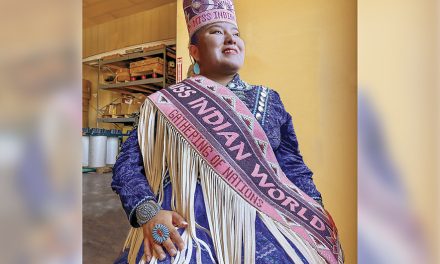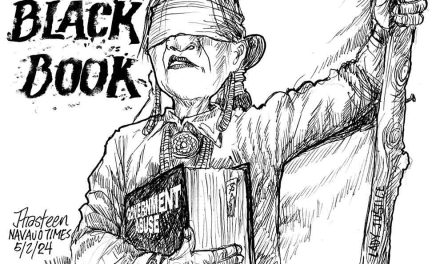
Navajo Area IHS prepares to ration care
WINDOW ROCK
As Navajo Area Indian Health Service health care facilities near capacity, with limited options for transferring patients elsewhere, NAIHS Chief Medical Officer Loretta Christensen said they are planning for the possibility of rationing supplies, equipment and medications.
“We do not want to have to do this, but if we can’t slow things down, if we can’t stop COVID, we’re going to have to make some very difficult decisions,” Christensen told Navajo Nation leaders last Saturday. That is the “stark reality” of where we are now, said Christensen. “Our systems are being overwhelmed,” she said.
Christensen said that the Navajo Area IHS created a pandemic resource allocation policy back in March, which was not needed in the first wave of COVID-19 but has to be considered now. “We are getting perilously close to invoking this during the second wave which is much worse than our first wave,” she said.
“It essentially means there will come a point where we don’t have equipment for everybody who needs it,” she said. “It could be a ventilator. It could be high-flow oxygen machines, medication or other supplies.” At that point, health care providers will have to find an equitable way to decide who gets who gets treatments and life-saving therapies, she said.
“We have a very well-developed policy in all of my service units where they are scoring people on a fair basis,” she said.
The Sequential Organ Failure Assessment score, a standard used across the country to assess intensive/critical care patients, is based on a number of metrics such as how the heart and lungs are functioning, how a patient is responding to treatment, and whether or not they have any other medical condition that will make it impossible for them to recover.
“Our team will then look at every patient, and, say we have 10 ventilators and 15 patients, they will decide who of those patients will get a ventilator,” she said.
Christensen said that the decisions as to who is allocated what resources are made by an independent ethics team of three to five people who review each case and speak with the family of the COVID-19 patient. “They tell the family, ‘We only have so many resources left, and we’re going to see if your loved one gets better and improves on the machinery and the treatment or if they get worse and cannot survive. Then we may need to take that machine and give it to someone who has a better chance,’” she said.
In other words, patients will be prioritized by their likelihood of survival. “We’re still working very hard to get people out to our tertiary centers in Albuquerque, Flagstaff, Phoenix, Tucson, and southern Colorado,” said Christensen. “We still can get people out right now but we did want to make you aware of this very difficult situation and that it is a possibility for our hospitals to go into full crisis allocation mode.”
Christensen said while contemplating all of this is very difficult, it is necessary. “None of my providers or nurses train to not save people and it’s extremely hard on them to think that they have to make this kind of decision,” she said. “Of course, it’s horrible for the family and all of the rest of us that watch this as well.”
Demand for oxygen
Christensen said securing enough oxygen has been difficult because oxygen vendors themselves are having trouble getting their tanks refilled due to the high demand across the country.
Even with sufficient oxygen on hand, Christensen said delivering enough to a high volume of patients can be problematic because of aged health care facilities. “They can only push so much pressure volume through the system through these high-flow oxygen machines and we’re about at maximum with that,” she said.
“We have machines – we just can’t hook them up because we don’t have enough infrastructure to run them.” Christensen said they are looking for alternative locations to put patients for oxygen treatment like the alternative care sites and other health care clinics but covering such a large land base as the Navajo Nation with enough supplies, staffing and services in a timely manner is a challenge.
“Our 27,000 square miles makes us unique but it also makes us very vulnerable when we’re trying to get resources quickly,” she said.
As a public service, the Navajo Times is making all coverage of the coronavirus pandemic fully available on its website. Please support the Times by subscribing.
How to protect yourself and others.
Why masks work. Which masks are best.
Resources for coronavirus assistance








 Highway 264,
Highway 264, I-40, WB @ Winslow
I-40, WB @ Winslow